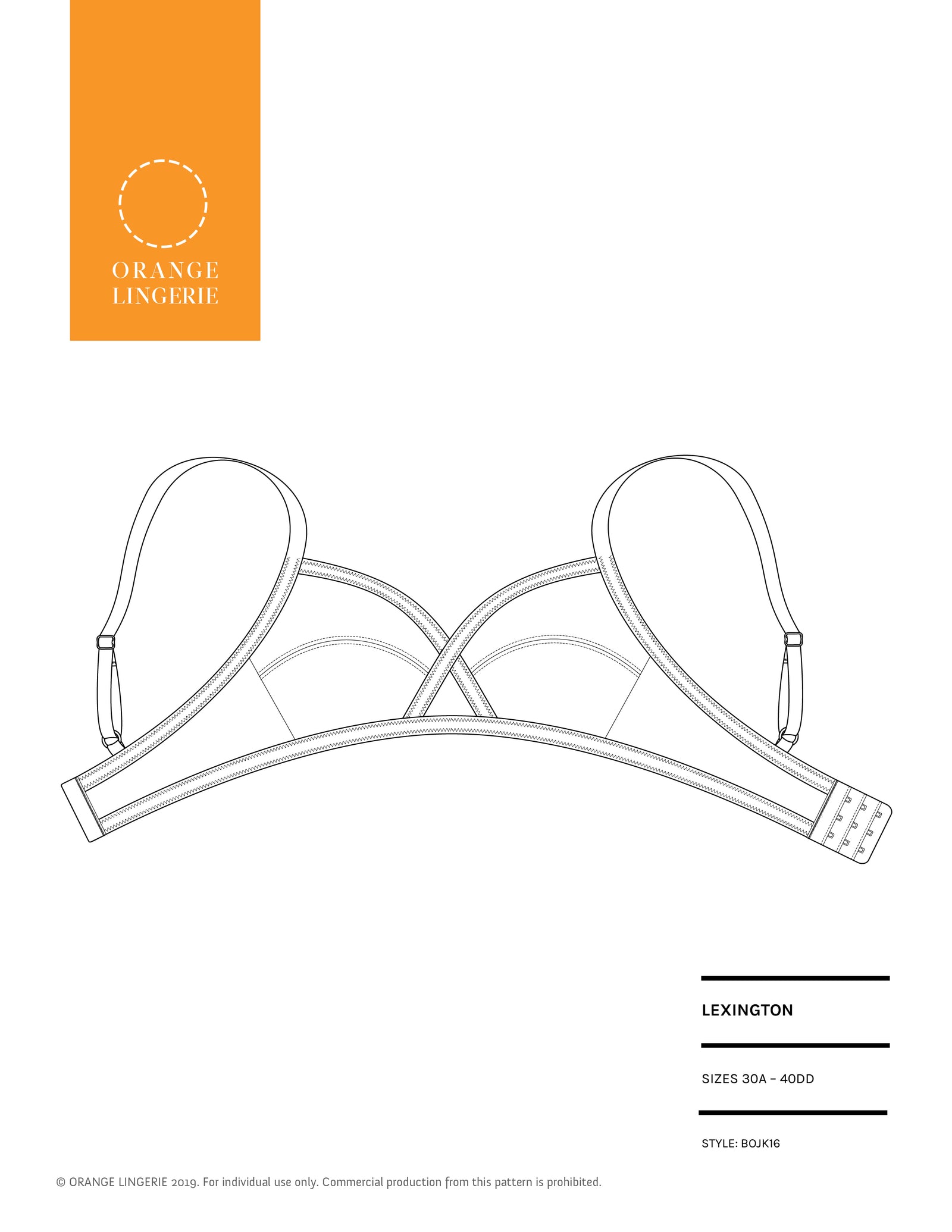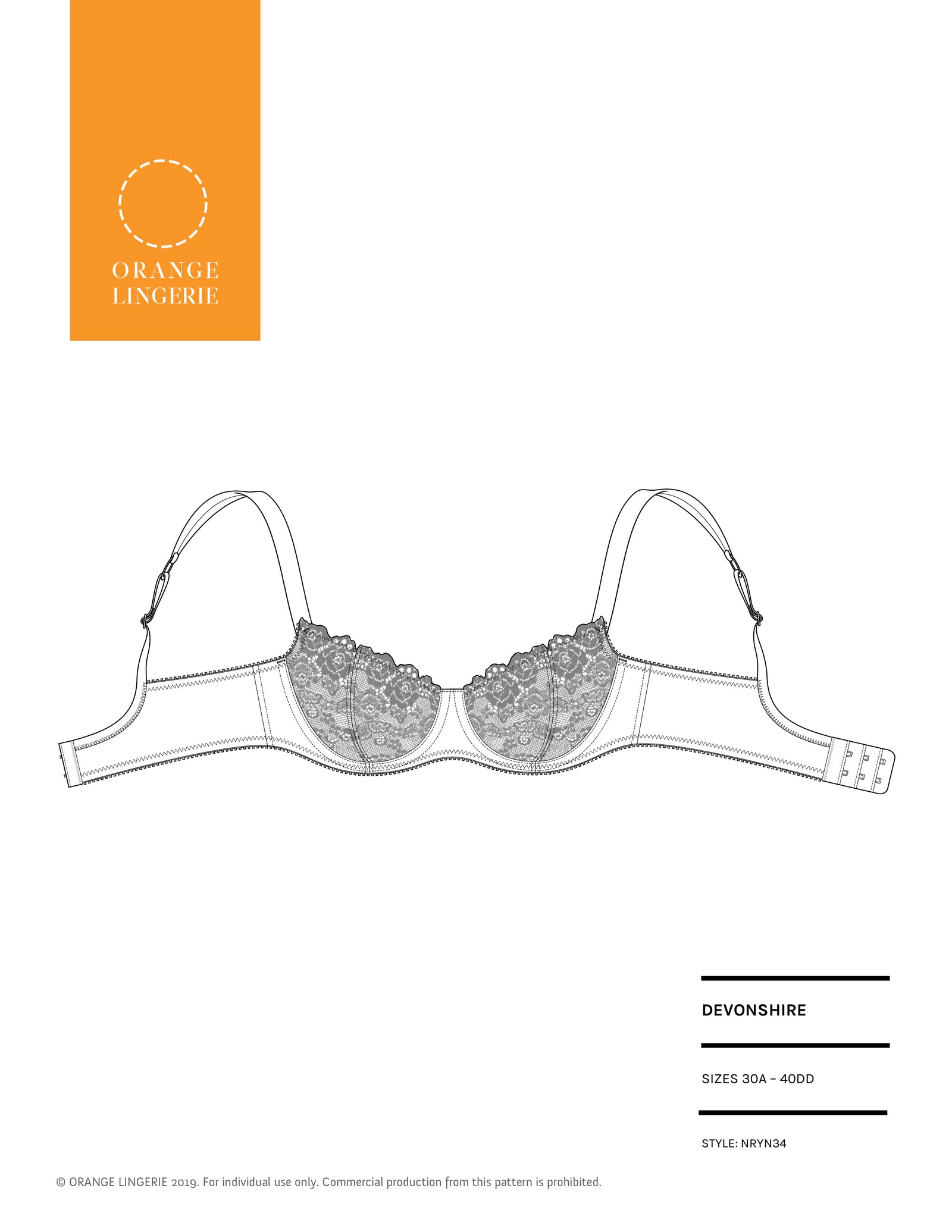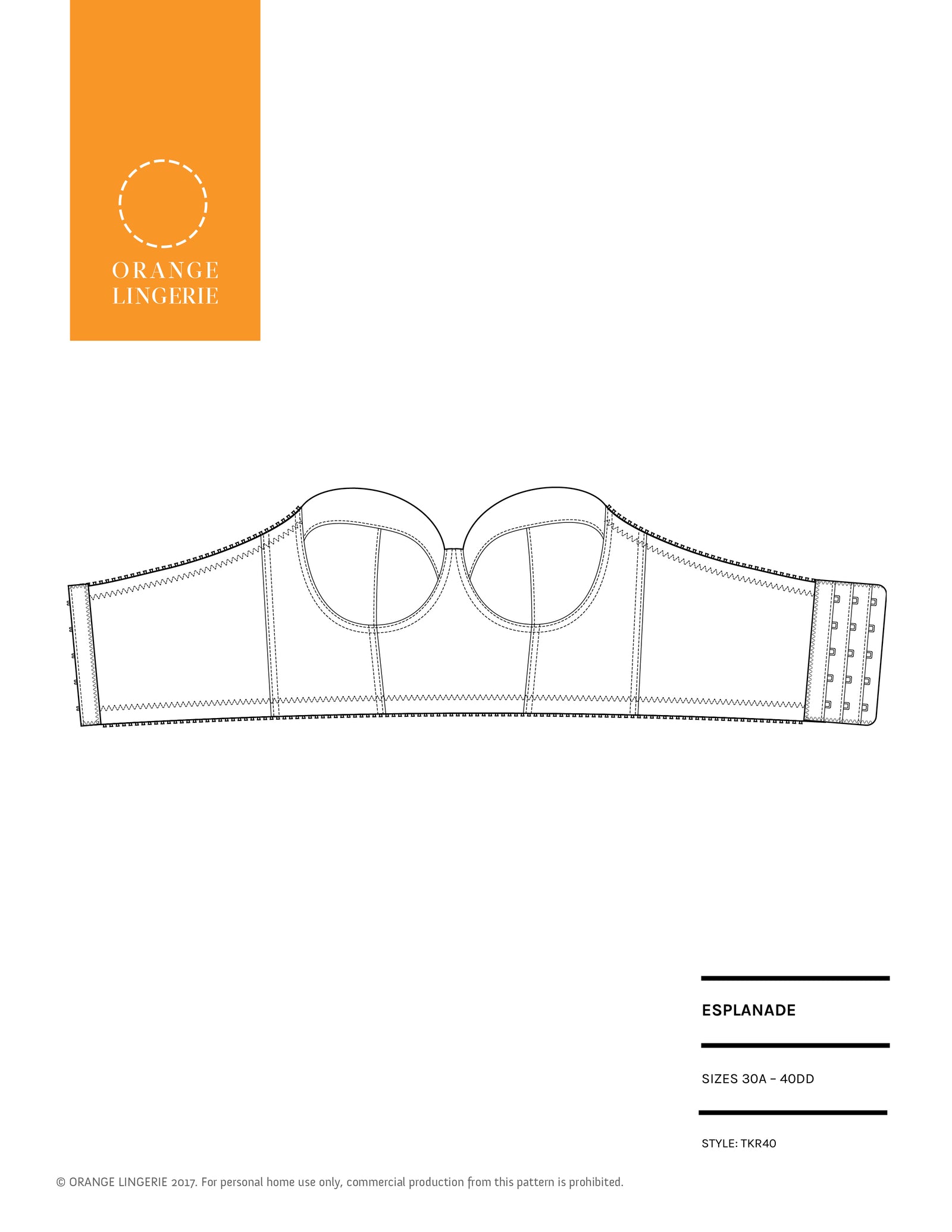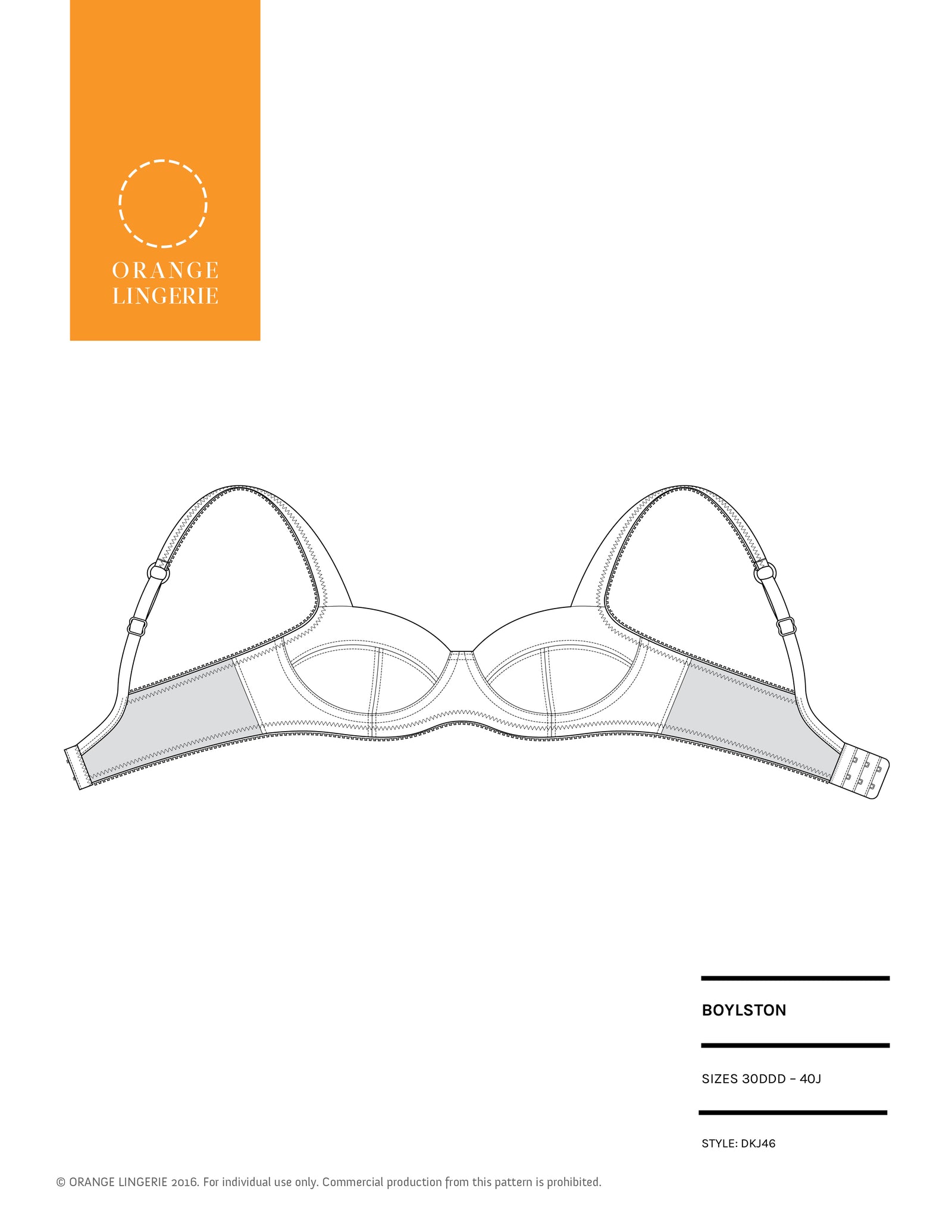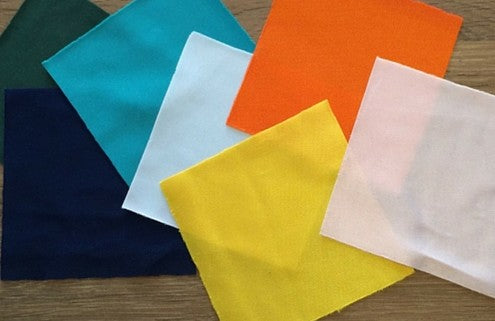
It happens to all of us. We fall in love with a fabric that is completely unsuitable for our project. Bra making is certainly no exception. So how do you use that fun Spandex print fabric to make your next bra? Or how do you make a plain tricot more interesting? Well, as usual, you have choices. Once you see how easy it is to transform a fabric into one that can be used for bra making, a whole new world of possibilities opens up to you.
There are three basic approaches to manipulating fabric for bra making: layering, lining and bonding. I’ll cover each approach and explain how and when use them as well as their limitations.
Layering
My definition of layering is treating two layers of fabric as one throughout the construction process but allowing the layers to remain independent from one another in the final bra. Examples of layering include putting a stretch lace or mesh over a tricot or over a power net (both pictured below) or even doubling the fashion fabric itself.

The easiest way to connect two layers of fabric together for easier handling during construction is to use a dissolvable spray adhesive (you can find my resource list here). Adhere the base fabric to the upper layer in a large rectangle, and then cut the desired pattern pieces from the “new” fabric you created. Just be sure that the direction of greatest movement in the overlay fabric matches up with that of the base layer and that it is smooth and flat on top of the base fabric.

This approach works well when you have a delicate open work overlay such as a stretch mesh or where there is no other option for beefing up your fabric such as in the band. Layering is not a great option if your fabric is already beefy (like swimwear Lycra weight) because the fabric combination will end up being too bulky for a bra.
Lining
Lining is closely related to layering, the difference being that the layers are constructed independently. This approach is primarily used when you want to line a cup that is made out of a fraying fabric such as silk. In that case, you want all the seam allowances to be enclosed and concealed. This means that two separate sets of cups are constructed. Like layering, lining does not work well if the fabric has any bulk.
Bonding
Bonding fabric means permanently adhering two layers of fabric together. Bonding has quickly become my favorite fabric manipulation option. It allows me to convert Spandex prints into a suitable bra making fabric and allows me to create my own fabrics by layering laces on top of colored tricots. It has the added benefit of making the pieces incredibly easy to handle during the construction process and limits any potential puckering or bagginess that can occur when working with two layers of fabric.
There are two ways to bond fabric. One is to bond a fabric to a fusible tricot interfacing. The other is to use a fusible web between two layers of fabric.
Lightweight tricot interfacing, pictured below, is often used for knits. It has some crosswise movement and little lengthwise movement making it a suitable bra making material on its own. The non-fusible side is also smooth against the body, as you would expect from a tricot.

Block fusing is the easiest way to bond fabric. This means taking pieces of interfacing and fabric, that are large enough to accommodate your pattern pieces, fusing the two together and then cutting the pattern pieces out of the new fabric you created. In this process you will want to be sure to match the direction of greatest movement in your fabric and interfacing.

A drawback of using tricot interfacing is that it is only available in black and white so if your fabric does not look good with either as a base, you will need to find another option. You can see from the above picture, where the lower right half of the spandex print has been fused to a white tricot interfacing, that it does alter the appearance of the fabric. I should also mention that tricot interfacing does not make a good base for open work fabrics. Something about the look of the interfacing where the fusible has melted is not really suitable for the right side of the garment.
That brings us to the second bonding approach – fusible web (a.k.a. MistyFuse). Once I found fusible web, I felt like I had discovered bra making magic.
Fusible web, pictured below, looks like a fine cobweb and is correspondingly very lightweight. It comes either with paper on one side or plain as pictured below. It has the wonderful property of disappearing as it melts to combine two layers of fabric, even when you bond an open work lace to a tricot fabric.

To use fusible web, use the same block fusing approach described above with one important change: use a non-stick surface such as parchment paper or a Teflon pressing sheet above and below the fusing area to prevent the web from sticking to your ironing board or iron. Note that if you use parchment paper on the right side of an open work fabric, you will get more of a matte finish than if you use a Teflon pressing cloth.
Bonding with either fusible can also be used in another way: to create your own tricot bonded foam to use for making bra cups. Just bond tricot fabric or tricot interfacing to both sides of a thin batting and you have a sheet of cut-and-sew foam. You can read more about sewing bra cups with foam in my article in Threads magazine, Issue #174 (subscription required).
While bonding has many benefits, it also has one big limitation; it cannot be used for the band of the bra because of the stretch demand in that area. Layering is the only manipulation option you can use to make a band firmer.
Selecting an Approach
In the end, the manipulation method you use is highly dependent on your fabric choices and the effect you are trying to achieve. Like so many things in sewing, the best way to determine what works best for your project is to test your options on fabric scraps to see which you like best.
